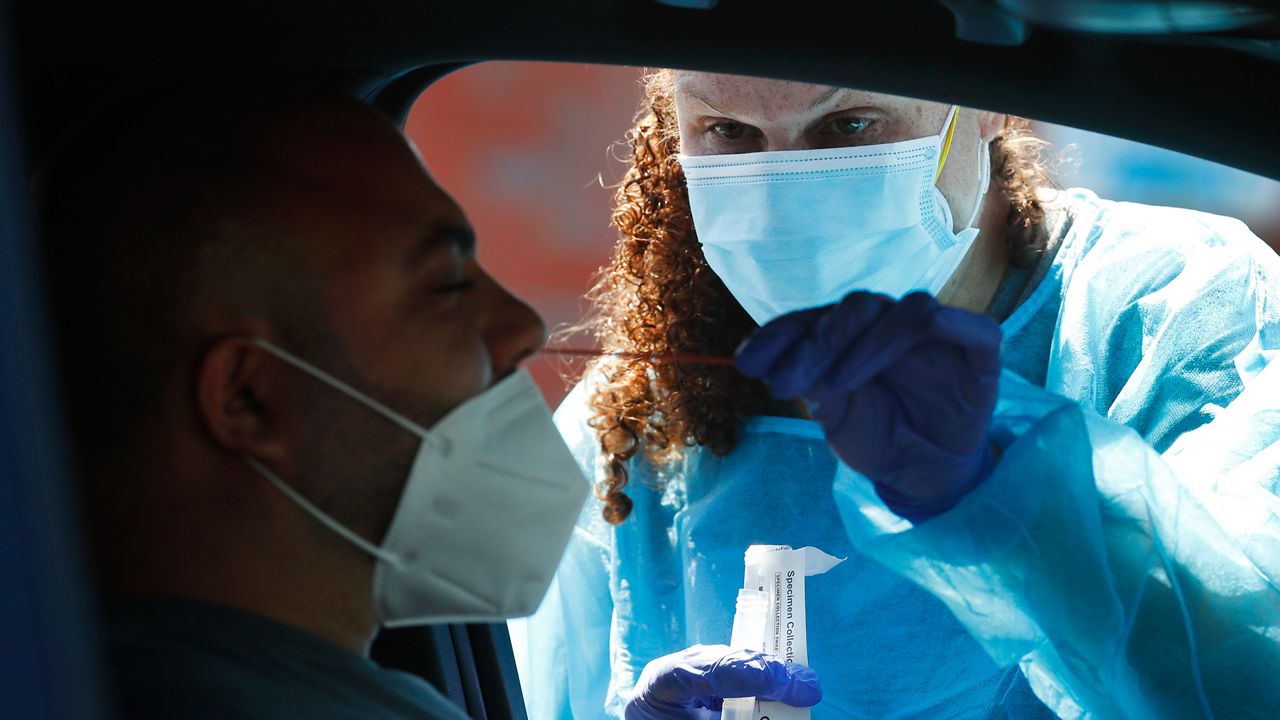COLUMBUS, Ohio — Ohio reported its largest single-day increase in COVID-19 cases in eight weeks on Tuesday as the more contagious delta variant spreads.
What You Need To Know
- Infections and hospitalizations continue to rise in Ohio
- Officials warn that low vaccination rates are a risk factor
- The more contagious delta variant is spreading widely
The state added 744 cases while seven-day average infections increased to 491, a 133% increase in less than two weeks.
Following months of declining cases, the abrupt reversal of trends comes despite Ohio surpassing a 60% vaccination rate for its adult population.
“We certainly are seeing an upward trend in our hospitalizations for COVID-19 positive patients and what concerns us is not necessarily just the number of individuals that are hospitalized, but the rapid increase in cases over the last 10 days,” said Sarah Hackenbracht, president of the Greater Dayton Area Hospital Association, which represents 29 hospitals and health organizations.
Hackenbracht said COVID-19 hospitalizations among member hospitals have surged in that time period, rising from eight to 37. It’s not yet known if the delta variant is what’s circulating locally, she said.
“If we continue to see that rapid increase carry forward, that causes a great deal of concern and anxiety for our health care workers who we absolutely depend on to provide care for our COVID-19 patients, but also everyone else who is coming into our region's hospitals,” she said.
Montgomery County’s 2.9% positivity rate is the highest of the state’s largest counties, ahead of Hamilton (1.9%), Franklin (1.5%), Summit (1.5%) and Cuyahoga (0.9%) counties.
In Lawrence County, infections are occurring at a pace that is alarming officials as the positivity rate has risen to more than 20%. Cases per capita in Lawrence are five times the statewide average.
The Lawrence County Health Department said in a Facebook post that vaccinated people in the county are believed to be safe, but officials emphasized that unvaccinated people should follow prevention measures, including masking. In the first two weeks of July, 44 people were hospitalized in Lawrence, according to the post.
A hotspot is also emerging in bordering northwest Ohio counties as Paulding, Williams, Defiance and Van Wert report some of the state’s highest case rates.
Williams County Health Commissioner Jim Watkins said he is concerned the trends could continue to worsen because the county is only 37% vaccinated and immunizations have slumped.
“Right now, I’d say that we're in general concerned,” he said. “We have seen increasing numbers as far as cases of COVID from where we had been. We had been doing much better than what we are today.”
While some counties in the U.S. are recommending or even requiring universal masking indoors due to rising infection numbers, Watkins said he expects Ohio to remain open as the delta variant spreads. He said the health department is focused on getting out the message that vaccination is even more critical as the variant causes infections to rise.
Watkins said that even if the DeWine administration were to decide to reimpose COVID-19 measures, the state legislature has greater power to keep Ohio open after Senate Bill 22 took effect last month.
“I don't expect much from the state at this point with the legislation that's been passed. I think that the state government's hands are fairly tied as far as that goes,” Watkins said. “We certainly don't have measures that could assist that we did previously, so I think that's going to only bode well for the spread of the virus.”
Statewide, the average test positivity rate has doubled, standing at 2.6%, as of Tuesday’s update.
COVID-19 hospitalizations rose to 348 in Ohio on Tuesday, a 74% increase from a low of 200 on July 9.
But deaths continued to trend downward, dropping to a new low this week as 38 were reported.
In the Dayton-area, health officials don’t believe it’s necessary to push universal masking indoors at this time because most of the people who are being admitted to local hospitals have not had a vaccination, Hackenbracht said.
In terms of physical capacity and resources, the current patient levels do not strain hospitals, but she said this far into the pandemic, hospitals hope dearly there won’t be another wave.
“Our worry is that this is a pandemic that our frontline health care workers have been engaged in now for more than 18 months,” she said. “We need to do what we can across the region to help them.”
Pete Grieve is a Report for America corps member covering public health for Spectrum News in Columbus, Ohio. Report for America is a nonprofit national service program that places journalists in local newsrooms to report on undercovered issues.



